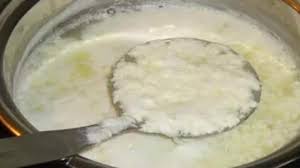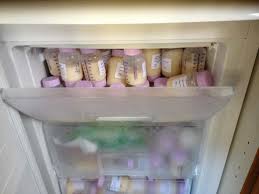The Best Practices for Storing Breast Milk at Home or on the Go
Breast milk is widely considered to be the best source of nutrition for infants and babies, and it’s important to store and thaw it in a safe and effective way. Storing and thawing breast milk can be done in a variety of ways, and it’s important to understand the best practices for doing so. This guide will give an overview of the best methods for storing and thawing breast milk, so that you can ensure your infant or baby is getting the best possible nutrition. Please keep reading for details on the following topics:
Where to store breast milk
Precautions with breast milk
Thawing breast milk
Warming breast milk
Spoilt milk
Preserving breast milk

BREAST MILK CAN BE STORED
At room temperature- 4 hours
In the refrigerator (77oF/25oC) or colder for up to 4 to 7 days
In the freezer (0°F/18°C) or colder for 6 to 12 months
PRECAUTIONS WITH BREAST MILK
Breast milk should never be refrozen after it has been thawed
Breast milk can be served at room temperature and does not need to be warmed
Breast milk left over from a feeding must be used within 2 hours
Breast milk must be stored in clean storage bags or bottles
The expressed breast milk must be clearly labeled with the date and time which it was expressed
Be sure to avoid storing the breast milk on the door of the refrigerator or freezer to keep the temperature constant
Store the breast milk in small portions
The amount of breast milk increases as it freezes
Breast milk must not be warmed on a stove
THAWED OR PREVIOUSLY FROZEN BREAST MILK CAN BE STORED
At room temperature for 1 to 2 hours
In the refrigerator for up to 1 day/24 hours
THAWING BREAST MILK

Thawing breast milk is an important step to ensure that the milk is safely consumed. It’s important to understand the various methods available for thawing, as well as the potential risks associated with improper thawing. We will now discuss the benefits of thawing breast milk, the different methods of thawing, and how to ensure thawed milk is safe for consumption.
HOW TO THAW BREAST MILK
Using the first in first out mantra: thaw out the oldest breast milk first
Breast milk can be thawed
Overnight in the refrigerator
In a container of warm water
Beneath warm running water
Breast milk must not be thawed in a microwave because nutrients can be destroyed
The countdown for thawing commences after the breast milk is completely thawed
Thawed and rewarmed breastmilk must be used within 2 hours
Thawed breast milk must never be refrozen
HOW TO WARM BREAST MILK

Wash and dry the hands
Move the milk from the refrigerator or freezer to the counter
Heat up water
Pour some warm water into a container
Pour the milk to be given to the baby in a clean sealed feeding bottle
Place the sealed bottle into a bowl of warm water (and leave for about 2 minutes) or under warm running
Mix the milk by swirling the bottle, ensuring an even distribution of temperature
Drop a few drops of the milk on to the wrist to test the temperature of the milk
If the rest of the milk is not used within 2 hours, it should be discarded
SPOILT MILK

Spoilt milk has a variety of causes, from being left out too long to being exposed to bacteria from other foods. Thawing spoilt milk is an important part of the process of ensuring that it is safe for consumption. We will now provide an overview of the steps involved in thawing spoilt milk and the safety precautions to consider.
SIGNS OF MILK SPOILAGE
Foul odor
A rancid taste
Change in the texture or color of the milk
The presence of various layers in the milk which do not mix together
THINGS TO AVOID WHILST REWARMING BREAST MILK
Microwaving breast milk – (this can change the milk’s composition)
Microwaves don’t heat evenly, and can cause burns to the baby’s mouth
Heating breast milk too hot
Using boiling water to warm the milk (this can reduce the quality of the breastmilk)
Heating breastmilk directly on the stove (this can cause damage to the milk’s composition)
HOW TO THAW BREAST MILK USING WARM WATER
In a container filled with warm water
Place the container inside, with the cap above the level of the water
Allow to continue until the milk is no longer frozen
Continue the warming process then offer to baby when suitable
Place the rest in the refrigerator for the next feed
Run hot water over the bottle of milk
Place a cap or steady finger over the nipple of the bottle to ensure it is sealed
Hold the bottle under hot water for a few minutes, rotating the bottle so the milk gets heated evenly through
Once completed, shake the bottle so the fat evenly mixes
HOW TO PRESERVE BREAST MILK IN A FRIDGE

Place the left-over milk in the fridge immediately after feeding or being expressed
Store the milk in clean storage containers or bags
Do not use containers with BPA (poisonous substances found in plastic) because it can contaminate the milk
Do not mix freshly prepared milk to already refrigerated milk
Place the milk in a compartment with a consistent temperature such as the back of the fridge
Avoid placing the breast milk near meat, or fish, as these can cause the milk to spoil
Disclaimer: The information provided in this content is for general informational purposes only. It is not intended as medical or healthcare advice, diagnosis, or treatment. Always seek the advice of a qualified healthcare professional with any questions you may have regarding a medical condition or healthcare decisions.

